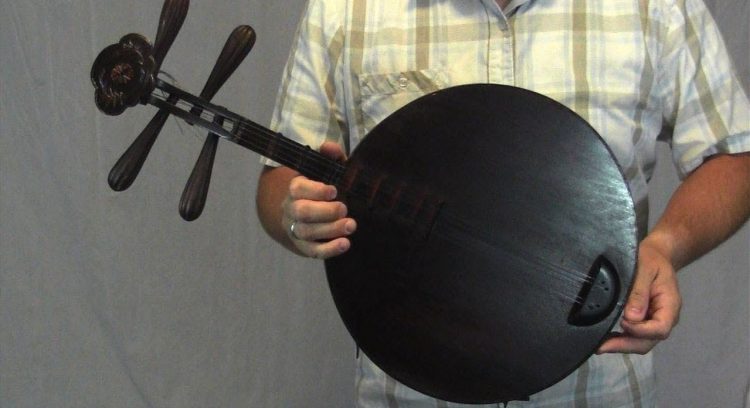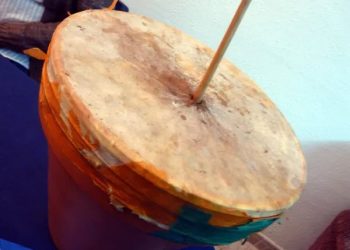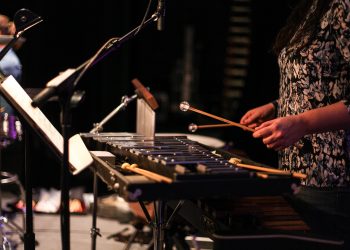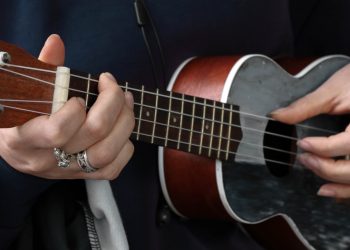Musical instruments have been a part of human culture for thousands of years, providing entertainment, emotional expression, and even spiritual significance. From ancient flutes and drums to modern electronic keyboards and synthesizers, there is a vast array of musical instruments that have been developed and used across cultures and generations. In this article, we will explore the top 11 musical instruments that start with the letter Y. While this may seem like a limited category, you might be surprised at the range and diversity of instruments that fall under this letter. From traditional African drums to contemporary electronic controllers, the Y-instruments we will discuss span a wide range of styles, origins, and functions. Whether you are a music enthusiast, a student of music history, or simply curious about the world of sound, this article will provide you with a fascinating and informative look at some of the most interesting and unique musical instruments that start with the letter Y. So, let’s dive in and explore the musical world of the letter Y!
1. Yangqin
The yangqin is an ancient Chinese instrument with a unique sound. It has been used for centuries in traditional Chinese music, and continues to be popular today. With its bright, metallic tone and wide range of sounds, it’s easy to see why the yangqin remains beloved by many musicians.
This stringed instrument consists of a wooden board that is stretched over metal strings. The player plucks the strings with two small bamboo sticks called mallets. Each note on the yangqin can be adjusted using movable bridges placed between each pair of strings. This allows players to create their own tuning which gives them more control over what they are playing.
Playing the yangqin requires some skill as well as knowledge about how to use the bridge pieces effectively. A good understanding of melody and rhythm is also essential for producing beautiful sounds from this instrument. For example, if one wants to play an upbeat piece then faster rhythms should be employed while slower rhythms work better for softer tunes.
Given all these considerations, it’s no surprise that learning to play the yangqin takes time and commitment – but given its distinctive tones, it’s worth it! Those who put in the effort will find themselves rewarded with a captivating musical experience unlike any other.
2. Yanggum
The yanggum is another traditional Chinese instrument. Like the yangqin, it has a unique sound that makes it stand out from other stringed instruments. However, unlike the yangqin, the yanggum does not have movable bridges. Instead, its strings are tuned in accordance with specific pitches and tones. This means that playing the yanggum requires more precision than playing the yangqin as there is no room for error when tuning or plucking each note.
In terms of melody and rhythm, the yanggum tends to produce a slower tempo compared to the faster paced melodies of the yangqin. Its notes also lean towards being more sorrowful and reflective rather than joyful and energetic like those on the yangqin. As such, many players turn to this instrument when they want to create an atmosphere of contemplation or beauty in their music.
Playing the yanggum can be challenging at first but with practice comes mastery. Through trial and error, one will eventually learn how best to use different techniques such as vibrato and tremolo to bring out certain nuances in their songs. That said, regardless of skill level, anyone should feel free to explore what this wonderful instrument has to offer – its sounds will surely captivate!
With these two instruments combined together – the bright metallic tones of the yanhin contrasted by the mellow melodic hums of the yangguim – it’s easy to see why musicians around China continue to appreciate them both! Together they provide a rich musical experience suitable for any setting; whether you’re looking for something upbeat or something slow and peaceful, either way these ancient instruments will deliver an unforgettable performance every time.
3. Yaogu
Another classic Chinese instrument is the yaogu, also known as a “moon guitar”. The yaogu has been around for centuries and it’s considered to be one of the most important instruments in traditional Chinese music. It’s played by plucking its strings with two fingers while keeping the other four free to hold down different notes or chords. This distinctive technique gives this instrument a unique sound that can range from mellow and soothing to bright and cheerful.
The design of the yaogu has evolved over time since its first appearance during the Yuan Dynasty (1271-1368). Its body is typically made from wood, but some versions are carved out of bamboo or reed instead. The number of strings on a yaogu can vary depending on where it was made; generally there will be between five and eleven strings. These strings are tuned differently than those found on western guitars, so playing the yaogu requires learning a new set of musical conventions.
What separates the yaogu from many other string instruments is its ability to produce a wide variety of tones – not just melody lines but more complex chordal sounds as well. By pressing down certain combinations of strings at once, players can create all sorts of interesting effects and harmonies that add texture and dimensionality to their songs. On top of that, musicians often use special techniques like tremolo picking which bring out even more nuances in their performance.
Due to these characteristics, many consider the yaogu to be an incredibly expressive instrument capable of conveying deep emotion through its melodic language. Whether you’re looking for something slow and contemplative or upbeat and lively, this beloved instrument will always deliver!
4. Yatga
The yatga is another traditional Chinese bowed string instrument, and it has its own distinct sound. This four-stringed instrument produces a lush and mellow tone which is perfect for both slow pieces and energetic melodies alike. The strings are tuned in fourths – similar to some of the western instruments – so playing the yatga may not be as difficult as one would expect.
Much like the yaraki, this instrument can also produce complex chords through certain bowing techniques such as double stops or harmonics. But what really sets the yatga apart from other bowed instruments is how it combines these harmonic textures with melodic lines by using special fingering patterns on the strings. By pressing down specific combinations of strings at once while rapidly bowing others, players are able to create unique chord progressions that add great depth to their music.
However, because of its larger size compared to other instruments, the yatga requires more strength when played than most other bows. As such, many musicians opt to use lighter bows made specifically for this purpose in order to avoid any strain on their arms and shoulders while playing.
With its rich tones, expressive possibilities and relatively easy learning curve, the yatga is an excellent choice for anyone looking to explore new musical frontiers!
5. Yayli Tanbur
Building on the unique tonal capabilities of traditional bowed instruments, we come to the yayli tanbur. This stringed instrument has its roots in Central Asia and is often described as having a ‘woody’ timbre that can be both gentle and powerful at the same time. It’s made up of three strings – two short ones and one long one – tuned in fourths like the yatga but with an added twist: each pair of strings are tuned differently, resulting in more complex chord progressions when played together.
The most distinctive feature of the yayli tanbur lies in its fretboard. Unlike other fretted instruments which have fixed frets, this instrument uses movable frets known as ‘mizrap’. By sliding these pieces along the fretboard while playing, musicians can create intricate glissando effects or even change notes mid-way through a phrase.
In addition to being able to produce subtle nuances from within a single note, players also have access to alternate tunings which allow them to explore different musical genres such as jazz and flamenco without needing any additional equipment. This makes it a great choice for anyone looking to expand their repertoire beyond just classical music.
Finally, mastering the yayli tanbur requires good technique and patience; however, once you do learn how to use all of its features, you’ll soon find that it’s capable of producing some truly beautiful sounds!
6. Yehu
Building on the versatile capabilities of stringed instruments, we come to the yehu. Unlike other bowed instruments, this instrument features two strings which are tuned in fifths and run through a bridge that is similar to those found on violins or cellos. This design allows for an increased range of notes compared to traditional fretted instruments, allowing players to explore different musical styles such as jazz and classical with ease.
The most distinctive characteristic of the yehu lies in its use of movable bridges. By adjusting these pieces while playing, musicians can create complex glissando effects or even change notes mid-way through a phrase. In addition to being able to produce subtle nuances from within a single note, many players also have access to alternate tunings which allow them to explore further musical genres without needing additional equipment.
What’s more, mastering the yehu requires good technique and practice; however, once you do learn how to use all of its features correctly it’s capable of producing some truly beautiful sounds! The versatility of this instrument makes it a great choice for anyone looking to expand their repertoire beyond just one type of music.
This unique combination of form and function make it evident why the yehu has been used by professional musicians around the world for centuries – it really is a remarkable piece of technology!
7. Yidaki
Continuing our exploration of musical instruments, we come to the yidaki. This traditional Indigenous Australian wind instrument is made from a hollowed eucalyptus branch and produces an incredibly unique sound that has been used for both ceremonial purposes and entertainment for thousands of years.
The yidaki’s characteristic sound comes from its construction; when air is blown into one end of the tube, it causes vibrations within the walls which produce resonant frequencies – similar to those found in other types of flutes or horns. What sets this instrument apart from others is its ability to be tuned using special techniques such as circular breathing, allowing players to create complex melodies with ease.
Due to its portability, the yidaki has become increasingly popular among travelling musicians who are looking for a way to bring their music everywhere they go. It also requires minimal maintenance, making it ideal for anyone interested in exploring new sounds without having to invest too much time into upkeep.
For these reasons and more, the yidaki has become a staple in many Indigenous cultures around the world – proving itself as an essential part of any musician’s toolkit!
8. Yotsutake
The yotsutake is another traditional instrument with ancient roots. Hand-crafted from bamboo, this flute produces a haunting sound that has been used for centuries in many cultures to express emotion and tell stories.
Unlike the yidaki, which is tuned using circular breathing techniques, the yotsutake relies on several complex finger positions to control its pitch. As such, it’s considered a more advanced instrument requiring practice and dedication if one wishes to master it.
However, those who are willing to put in the effort will find themselves rewarded with an incredibly versatile tool capable of producing rich melodies or simply accompanying conversations or chants – something that can be done without having to take up too much space!
Given its beautiful tone and ease of portability, the yotsutake has become increasingly popular among travelling musicians looking to bring their music wherever they go – making it an essential part of any musician’s repertoire.
9. Yu
The yu is another traditional instrument with deep and ancient roots. Similar to the yotsutake, this instrument is crafted from bamboo and produces a hauntingly beautiful sound. The distinctive tone of the yu can be used in both melodic accompaniment or as an expressive solo instrument.
Unlike other instruments, the yu comes equipped with several strings which are plucked by each hand simultaneously – making it considered more complex to play than many other instruments of its kind. This allows for a diverse range of tones and melodies that one can achieve when playing the yu.
In addition to its unique sound, another feature of the yu is its size – it’s small enough to fit into any bag and therefore perfect for travelling musicians who want to take their music on-the-go! Furthermore, due to its portability, the instrument has become increasingly popular among street performers looking to make their mark at local markets or festivals.
Overall, the versatility offered by the yu makes it a favourite amongst many musicians – allowing them to express themselves through rich melodies and captivating sounds no matter where they go.
10. Yueqin
Continuing our exploration of traditional instruments, let’s move on to the yueqin. A close relative of the lute family, this instrument has been part of Chinese culture for centuries and is a favourite among many musicians due to its beautiful sound and unique design.
The yueqin consists of two parts: an upper board which contains four strings attached to pegs at one end; and a lower bowl-shaped body with a cavity that amplifies the sound when the strings are plucked. The player holds the instrument upright while strumming or picking out tunes using their fingers – making it easy to create complex pieces even without any additional accompaniment!
One great feature of the yueqin is its ability to be used in various musical genres – from classical music to modern pop songs. This versatility makes it a great choice for those looking for an all-round versatile instrument that can fit into different styles. Furthermore, due to its small size, it’s also perfect for street performers who want something portable yet powerful enough to draw attention.
The beauty of the yueqin lies in its simplicity – allowing players to express themselves through captivating melodies no matter where they go! With such a wide range of options available, there’s sure to be something suitable for everyone who wants to take up this wonderful instrument and learn more about traditional Chinese music.
11. Yuka
Moving away from the lute family, let’s take a look at another traditional instrument: the yuka. This percussion instrument is made of two wooden blocks connected by strings, and has been used in various forms for centuries all over Asia. Its unique sound is created by striking or shaking the two blocks together – making it great for adding rhythms to any performance!
The yuka can be played solo as part of an ensemble with other instruments, such as drums and cymbals; or even as accompaniment to singing and dancing. It’s also versatile enough that it doesn’t necessarily have to fit into one specific style – allowing players to express their creativity however they choose. With its portability and easy-to-learn design, the yuka makes a great choice for anyone who wants to explore different kinds of music on a budget.
Not only does this instrument offer interesting sounds but it also comes with certain spiritual benefits too. For many musicians, playing the yuka helps them connect with nature through rhythmical movements which bring about peace and relaxation. Furthermore, its calming vibrations are said to help restore balance within the body and mind – encouraging focus and mindfulness during performances.
Overall, the yuka is a fascinating instrument that brings plenty of joy both musically and spiritually. So why not give it a try if you’re looking for something new? There’s no doubt you’ll find yourself captivated by its beautiful tones before long!










